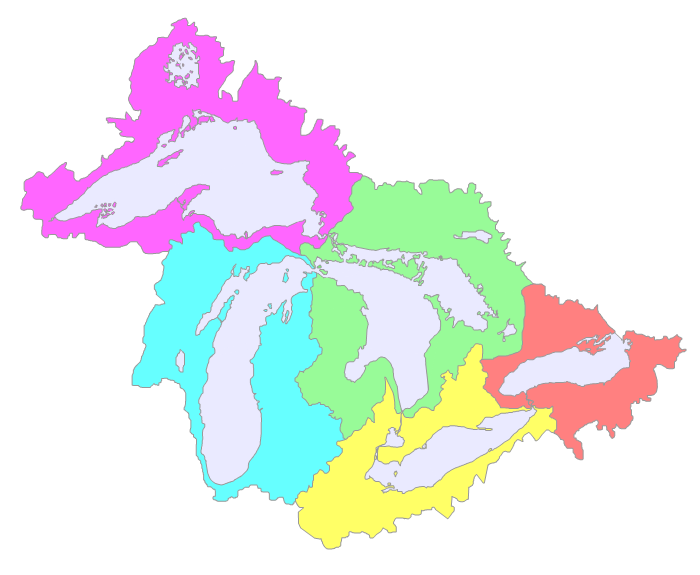When I visit with my family and talk about why we migrated to Michigan, I often hear reasons such as:
- Plenty of jobs and economic opportunities
- The Great Lakes
- The Motor City
- Motown
- Top-notch Universities
- First-class hospitals and healthcare facilities
- Social services
- No threat of major natural disasters
Until recently, I believed that we were “safe” from natural disasters here in the Mitten State. But with the statistics on the occurrences of floods and all the gallons of water in our Great Lakes, I am not so confident anymore. That includes our neighboring states that have shorelines along our five great lakes with businesses that help to fuel our Nation’s economy.
Water damage from a flood, storm, or broken pipe can displace business operations and, if incorrectly handled, could cause long-term structural damage to a building. Managing a water damage insurance claim is complicated and time-consuming. Businesses’ first concerns must be safety, employees, vendors, and creditors.
For example, Ford Motor Company is headquartered in Dearborn, which is in a low ground-level area bordering the Rouge River, which floods almost every time it rains (in my experience!). Ford’s U.S. activities contribute approximately $100 billion to the U.S.’s G.D.P. through suppliers, dealers, and various community industries. If a significant flood impacted a company like Ford, you can see how far-reaching the impact would actually be not only to Michigan and the Midwest but for the Nation as a whole.
According to The National Geographic Society, “Floods cause sedimentation and erosion. Floodwater can also alter the landscape, for instance, by eroding riverbanks and causing them to collapse. As floodwater carries material from the eroded banks, it suspends sediment in the water, which can degrade water quality and lead to harmful blooms of algae,”.
National Geographic talked about how floods are the most destructive natural disasters and have been, throughout history, with results that are often fatal. They cited the Central China flood of 1931 as one of the worst flooding events in recorded history.
They stated that “The Yangtze and Huai Rivers broke their banks, killing as many as several million people. The aftermath was devastating; deadly waterborne diseases like dysentery and cholera spread quickly, and those who survived faced the threat of starvation,”.

Which states have shorelines on the Great Lakes?
When we were in grade school and learned Michigan history and geography, we were taught an excellent acronym to remember our five Great Lakes. It is H.O.M.E.S., which stands for:
- Huron
- Ontario
- Michigan
- Erie
- Superior
The lakes are divided among jurisdictions along the Canadian province of Ontario and along U.S. states like Michigan, Wisconsin, Minnesota, Illinois, Indiana, Ohio, Pennsylvania, and New York. Michigan is beautifully framed by four of the Great Lakes: Superior, Huron, Erie, and Michigan. It is truly the Great Lakes State with three times as much shoreline as the next state, Wisconsin. Michigan has 23.3% of the total shoreline of the Great Lakes compared to 8.5% in Wisconsin.
The Great Lakes Commission explains how, “The Great Lakes cover more than 94,000 square miles and hold an estimated six quadrillion gallons of water – about one-fifth of the world’s fresh surface water supply and nine-tenths of the U.S. supply! The system is invaluable as the source of drinking water for more than 40 million people in the U.S. and Canada,”.
They went on to add more interesting facts that I did not know before. They cited that, “The lakes directly generate more than 1.5 million jobs and $60 billion in wages annually. They’re also home for more than 3,500 plant and animal species, some of which are found nowhere else on Earth. The lakes provide the backbone for a $6 trillion regional economy that would be one of the largest in the world if it stood alone as a country. Recreation on the Great Lakes – including world-renown boating, hunting and fishing opportunities – generate more than $52 billion annually for the region,”.
I knew our region was a significant contributor to our country’s economy, but I assumed it was because of the automotive industry – not our Lakes. How wonderful to learn!
Furthermore, the National Oceanic and Atmospheric Association (NOAA) shares that, “With roughly twenty percent of the world’s surface freshwater, the Great Lakes are the world’s largest freshwater system, and contain enough water to cover the entire lower forty-eight states to a depth of almost ten feet,”. Wow – that is certainly impressive!
*The NOAA Office of Response and Restoration (OR&R) is a center of expertise in preparing for, evaluating, and responding to threats to coastal environments, including oil and chemical spills, releases from hazardous waste sites, and marine debris.
What was the worst flood in Michigan history?
So far in my lifetime, I have yet to see a major flood happen in my area of southeast Michigan. In 1904, The Grand River Flood affected Central and Southern Lower Michigan with flooding being most prevalent in the Grand, Kalamazoo, Saginaw, and River Raisin Basins. The flood flows (discharge) from this flood are still the highest associated with spring flooding since recordkeeping began—still a little north and east of where I live.
From the National Weather Service, “The Grand River Flood of 2013 impacted Southern Lower Michigan. Flooding was most prevalent in the Grand and Thornapple River Basins. No fatalities were reported. Over 1200 homes were flooded and high water closed over 300 roads. Record stages were set at 5 locations along the Grand River. Damage was estimated to be in excess of $43 million (2013 dollars),”.
The 2017 Mid-Michigan Flood, also known as the Great Flood of 2017, was another significant event in Michigan’s history. This flood occurred in late February and early March 2017, affecting areas like Midland, Isabella, and Saginaw counties. Heavy rainfall combined with melting snow led to rivers overflowing their banks, causing widespread flooding and property damage. Thousands of residents were evacuated from their homes, and the damage was estimated to be in the hundreds of millions of dollars.
Effects of flash floods on the environment
In conclusion, the impact of flash floods on the environment, particularly in states with shorelines on the Great Lakes, can have far-reaching consequences on ecosystems, economies, and communities. Understanding the potential risks, taking proactive measures to mitigate flood damage, and having a team to handle insurance claims are essential for safeguarding valuable natural resources and livelihoods.



mhsolo
w4moxq
1431zc